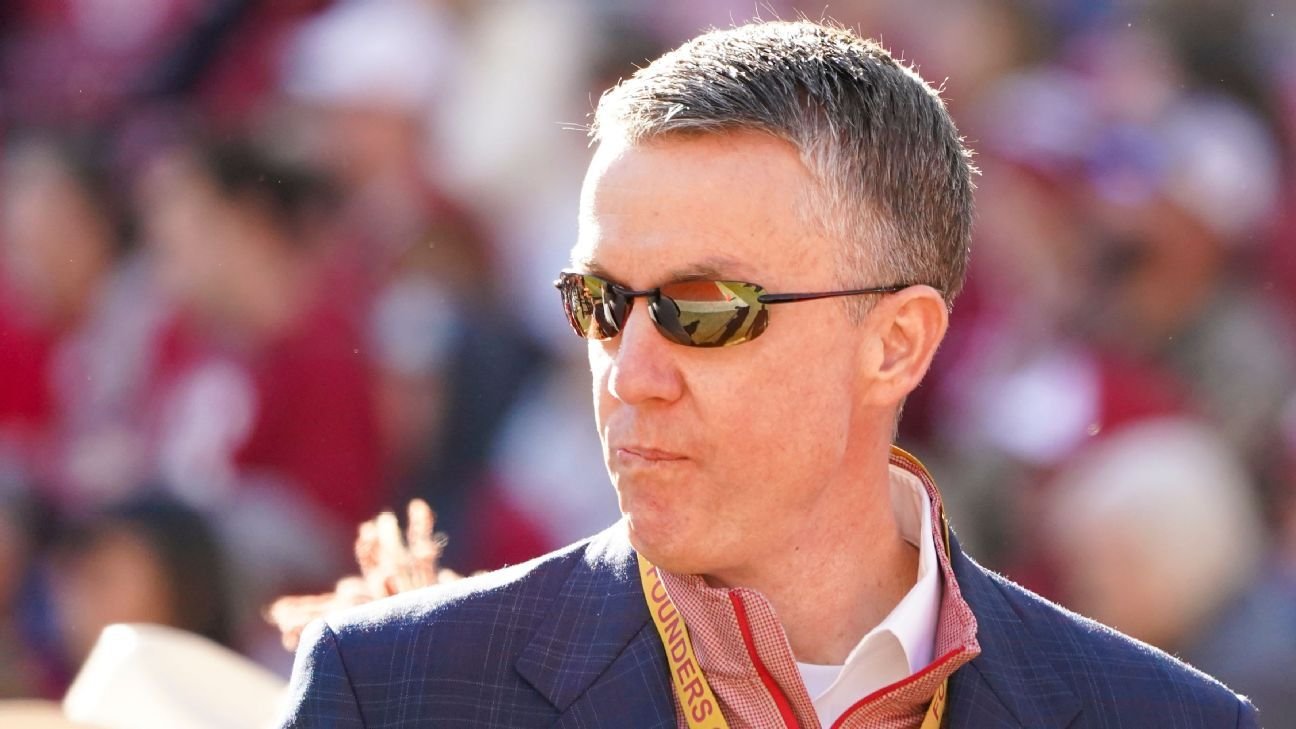University of Alabama athletic director Greg Byrne has worked in college athletics for over three decades, including previous stints as the AD of Arizona and Mississippi State.
He’s seen it all, at least until late Friday night, when he began officially facing a new challenge — paying college athletes directly, or more specifically deciding which teams Alabama would pay directly, and how much, in an effort to keep the entire operation going.
Claudia Wilken, a federal judge in California, approved a settlement Friday between the NCAA and athlete plaintiffs that established a revenue sharing system that allows athletic departments to pay out about $20.5 million directly to their players. The agreement lasts 10 years, and the money is expected to increase annually.
While college athletes have been taking in outside payments for their name, image and likeness, the so-called House settlement allows it to come from school coffers (media rights, ticket sales, etc.). What was once mostly unregulated is now mostly regulated.
NIL deals will have to go through a clearinghouse to determine whether they are in line with actual endorsement or promotional value — say Caitlin Clark and State Farm — and not just a workaround for boosters to pay recruits.
Whether all of this can withstand additional legal challenges, practical operational concerns and/or schools actually following the rules remains to be seen. The potential magnitude of the House case is indisputable, though.
“I tell our coaches and our students, ‘The three most significant events in the history of college athletics are, first, the NCAA’s foundation [1905], second, the adoption of Title IX [1972] and all the opportunities that were created because of it, and, third, the House settlement,'” Byrne told ESPN.
Byrne welcomes an established system to replace the “fluidness” of the past few years and is happy for athletes to be paid. But there on the front lines of implementation, athletic directors have to make this work.
“It’s challenging,” he said.
Start with this: Not every student-athlete will now be paid. Indeed, the vast majority won’t.
Byrne has to weigh how to allocate the $20.5 million in a way that makes the most sense competitively and financially for Alabama. The school has a powerhouse football program, but it also has 20 other teams, including recent national champions in softball, gymnastics, women’s golf and men’s golf. Men’s basketball also reached the 2024 Final Four.
Alabama, like many other major universities, tries to win in everything.
“I tell our coaches, ‘We don’t have a sport here at the University of Alabama just to have a sport,'” Byrne said.
For generations, though, it has been one sport — football — that has made most of the money to fund those other teams. Alabama, like most places, saw only football ($26.4 million) and men’s basketball ($5.9 million) deliver a profit in fiscal 2024, according to public records. Everyone else lost, sometimes millions — women’s basketball, for example, came in $4.2 million under.
The department expenses ($262.8 million) outstripped revenue ($234.8 million) for a $28 million deficit. That’s up from $13 million the year prior — mainly, the school says, due to one-time costs associated with Nick Saban’s retirement.
No one is going to cry for the Crimson Tide, but with a new $20.5 million expenditure hitting budgets (and increasing each year), even the biggest schools are trimming staff, reallocating funds and trying to figure out how to properly plan for a new world while maintaining traditional success.
Does that mean investing almost everything in football and men’s basketball, thus leaving other teams out of the money, despite potential complaints? Does it mean cutting programs? Can places maintain robust support systems in, say, nutrition or mental health?
The old way wasn’t “fair” to football and men’s basketball players, who didn’t have a choice as the money they generated was spent elsewhere, but the House case brings into question whether broad-based participation, let alone success, is even possible?
Ohio State, for example, fields 33 varsity teams. Boston College has 29. Stanford 36. Do some of them need to move to club-program status?
Or put it this way: If this is a “challenge” even in Tuscaloosa, imagine what everyone else is facing.
“How do you keep your department healthy long-term so you can keep offering opportunities?” Byrne said. “In the past, we tried to be all things to all people. Every coach is going to want revenue share for their athletes, and I don’t blame them.
“But if the goal is to have as many programs as you can,” he continued, “you are going to have to be strategic.”
One rough initial estimate within the industry is that 75% of the $20.5 million will get allocated to football players, 15% to men’s basketball, 5% to women’s basketball and 5% to other sports — softball, volleyball, hockey, soccer, lacrosse or whatever specific sport a school prioritizes.
In practicality, athletic directors across the country believe that number will skew even further to football and men’s basketball because success there generates the ticket sales, marketing dollars, merchandise revenue and donations needed to prop up the entire enterprise. A dollar invested in a great quarterback or point guard will produce a return. A dollar invested in a swimmer almost assuredly will not.
Even at the biggest schools, there is a finite amount of money — and now a $20.5 million hole to fill.
No one wants to cut sports. No one wants to undercommit to certain teams. College athletic leaders got into the business to oversee more sports and more athletes in more ways, not to contract or pinch pennies.
Business is business, though, and college sports just became even more about business.
#Wetzel #NCAA #settlement #time #divide #spoils



